
 |
|
|
Corn
Volume 63 Number 7 Date 06/14/2018 CORN ROOTWORM - Larvae began emerging from overwintered eggs about a week ago and peak hatch (50% egg hatch) is predicted to occur during the last two weeks of June. The estimated average peak date for the southern half of the state is June 21. Larval activity should be assessed later this month in fields that have historically had problems or if Bt-trait performance issues are suspected. Submerging the roots in a bucket of salty water (i.e., float test) or digging up plants and breaking apart the soil around the root system are two methods for confirming rootworm feeding. ROSE CHAFER - Light defoliation caused by this beetle was observed this week on corn in southern, central and western Wisconsin. Currently the infestations involve fewer than 2% of plants, though the beetles were numerous (4-5 per plant) on a few individual plants. Rose chafers are also appearing on soybeans and a variety of ornamental and garden plants. Beetle pressure is likely to be heaviest in fields on sandy soils and can be expected to continue until mid-July. EUROPEAN CORN BORER - The treatment window for first-generation larvae has opened in southern Wisconsin. Although much of the state's corn acreage is not attractive for oviposition and too small to support larval survival, scouting for eggs, small larvae, and early whorl feeding is suggested for advanced fields with an extended leaf height greater than 18 inches. Controls directed against the early-instar stages must be applied before the caterpillars begin boring into corn stalks and midribs. The narrow 300 degree day corn borer treatment window from 800-1,100 GDDs (modified base 50°F) will close before the end of the month. WESTERN BEAN CUTWORM - Pheromone traps are now being set in preparation for the annual moth flight. Participants in the western bean cutworm monitoring program are reminded to begin reporting counts to Tracy Schilder at tracy.schilder@wisconsin.gov by June 20 and each Wednesday through mid-August. STALK BORER - Scouting should begin for this mid-season pest that migrates from perennial grasses and broadleaf weed hosts in early June and infests predominantly the first 4-6 rows of corn. Leaf feeding will become pronounced by late June and spot treatment may be justified for severe infestations. Close inspection of fields is recommended through the V7 stage since Bt corn hybrids suppress but will not completely control stalk borers. -- Krista Hamilton, DATCP Entomologist 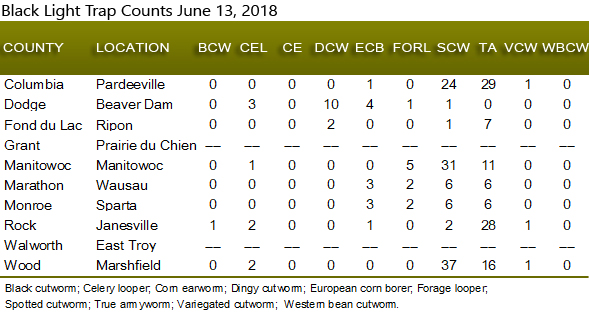
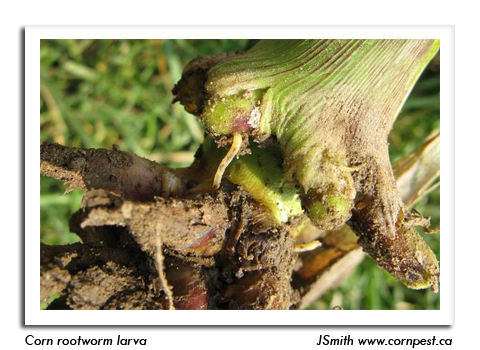
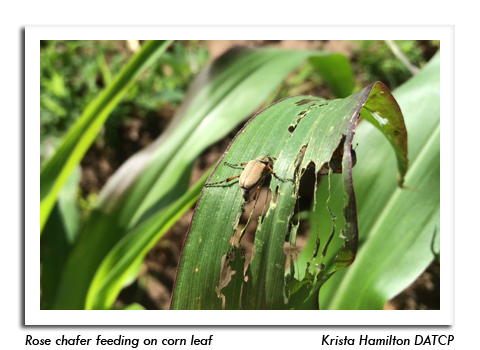
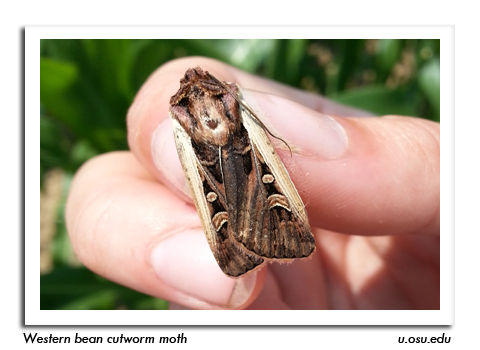
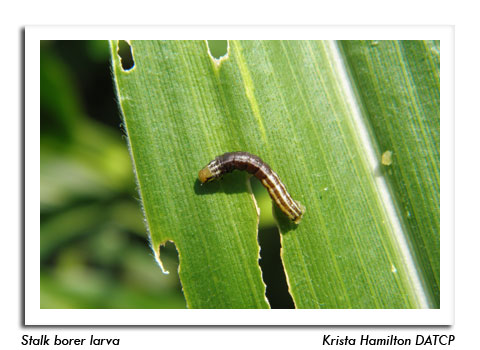
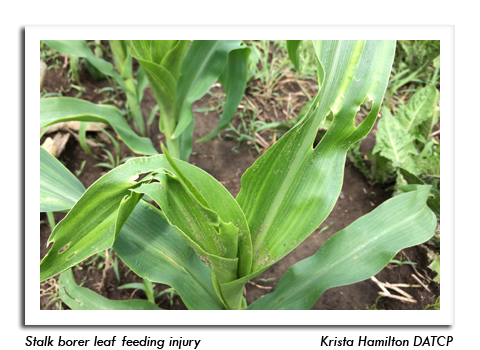
|
|
|